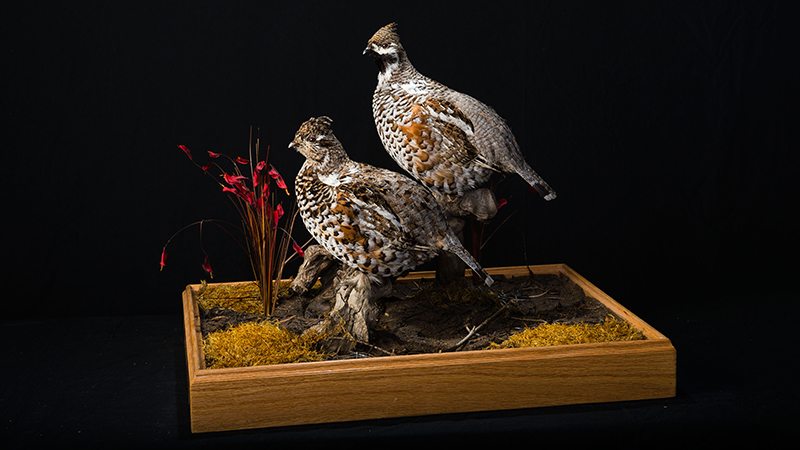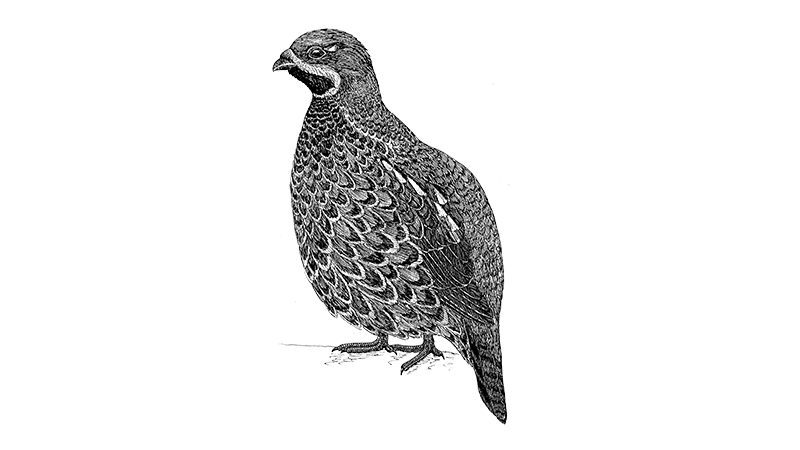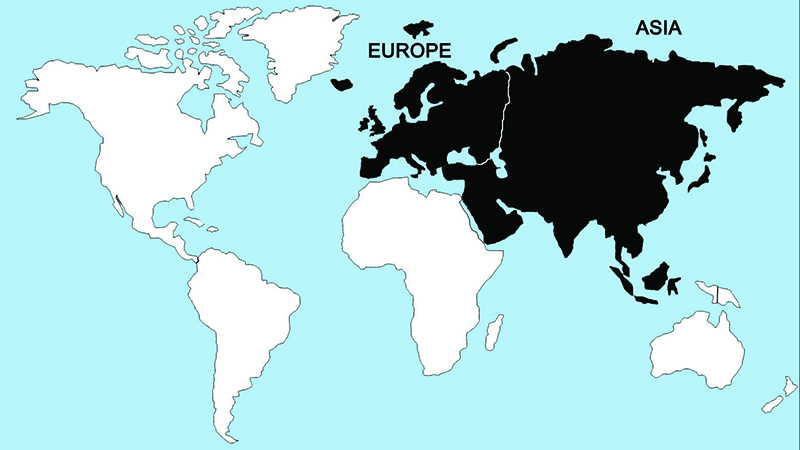Hazel Grouse

Male hazel grouse are Eurasian relatives of the North American ruffed grouse. Unlike male ruffed grouse, displaying male hazel grouse “sing” from a prominence, such as a tree branch or stump. There are individual and regional differences in the song, and neighboring males can perhaps recognize one another in this way.
Since the birds are monogamous and probably remain together for much of the year, courtship is fairly simple. Pairs are evidently formed during fall, but during winter the females often wander, and there is no evidence that the same pair bonds are reestablished in the spring. Nest sites are generally very close to or beneath cover provided by tree trunks, shrubs, or young spruce, or the roots of fallen trees. Clutch sizes vary from 3–14 eggs, but often number about ten. An entire ten-egg clutch may be laid in 13–14 days. Incubation probably begins with the last or penultimate egg, averaging about 25 days. During this period the male commonly leaves the territory but rarely may return later to accompany the female and the brood.

Regions Birds Are Found

Collection Location & Year
Mongolia 2001
Taxonomy
| Order | Galliformes |
|---|---|
| Family | Phasianidae |
| Sub Family | Tetraoninae |
| Species | Bonasa |
| Genus | bonasia |
Gender
Female & Male
References
- Cramp, S., and K. E. L. Simmons, eds. 1980. The Birds of the Western Palearctic. Vol. 2. (Hawks to Bustards) London, UK: Oxford Univ. Press.
- Johnsgard, P. A. 1983. The Grouse of the World. Lincoln, NE: Univ. of Nebraska Press.
- del Hoyo, J. A. Elliot, and J. Sargatal, eds. 1994. Handbook of Birds of the World. Vol. 2 (New World Vultures to Guineafowl). Barcelona, Spain: Lynx Editions.